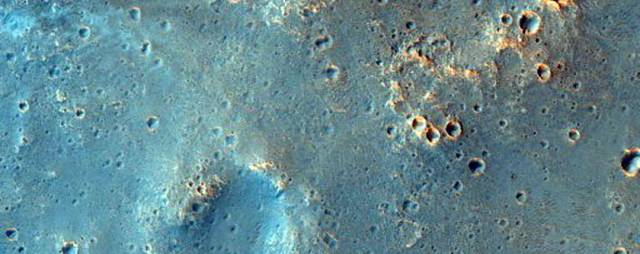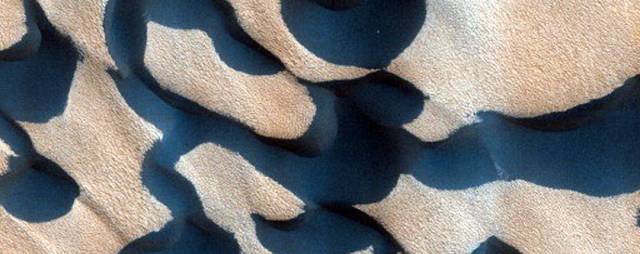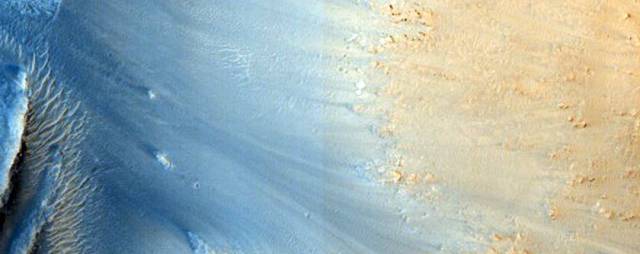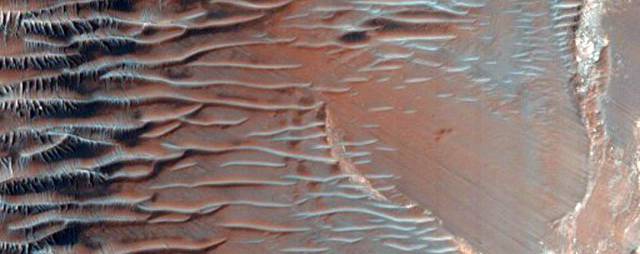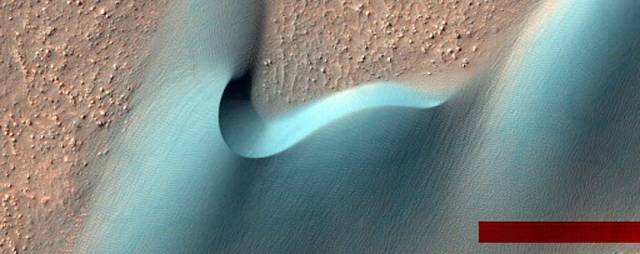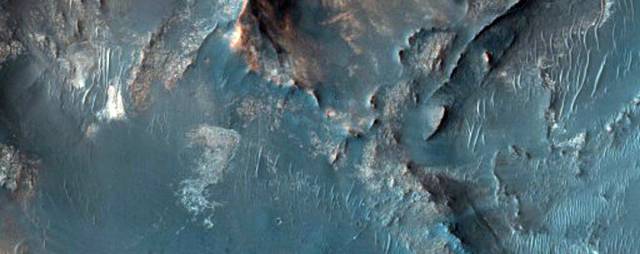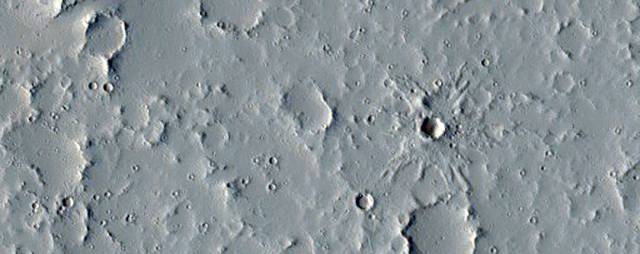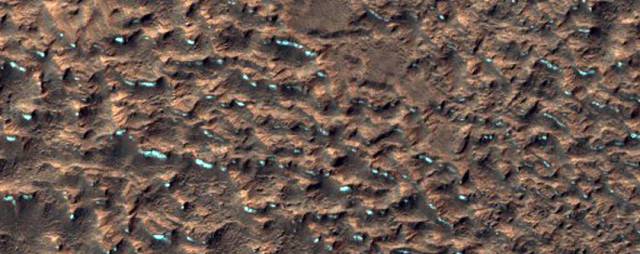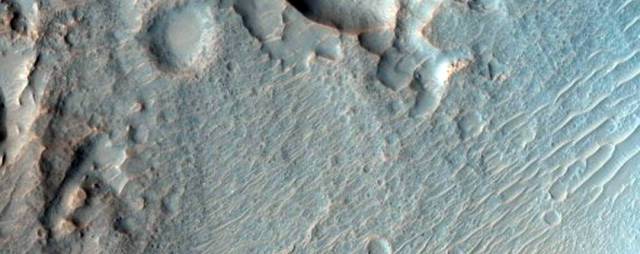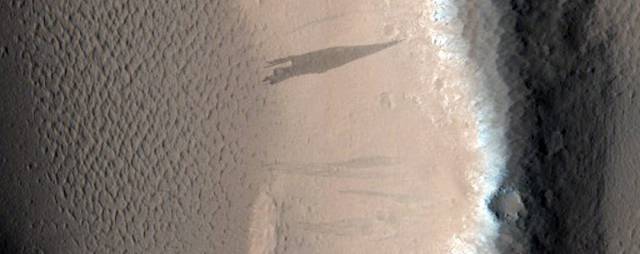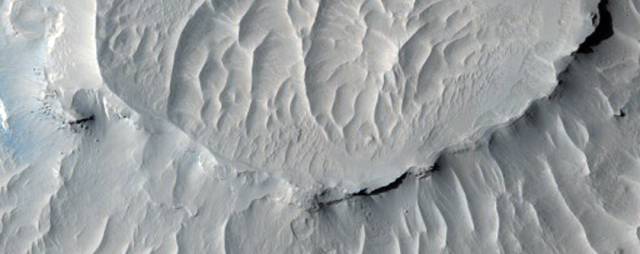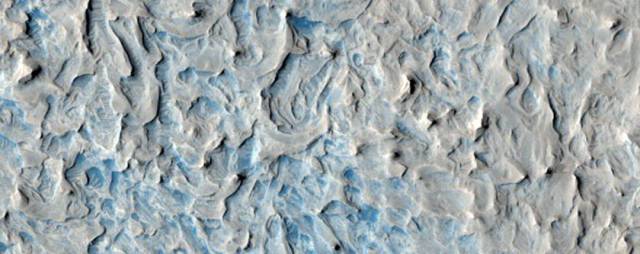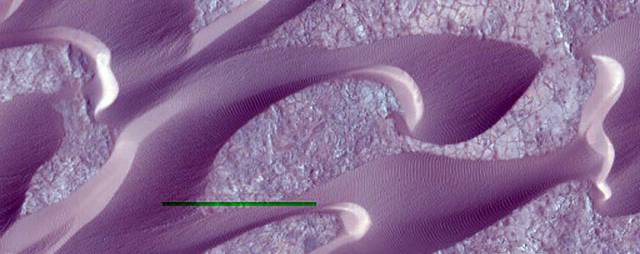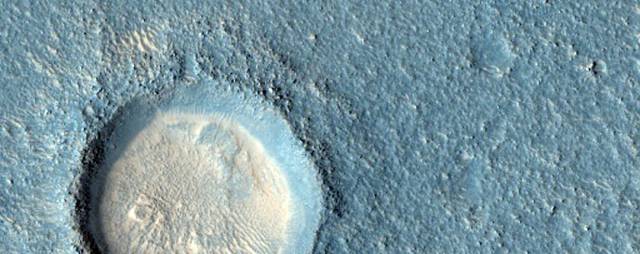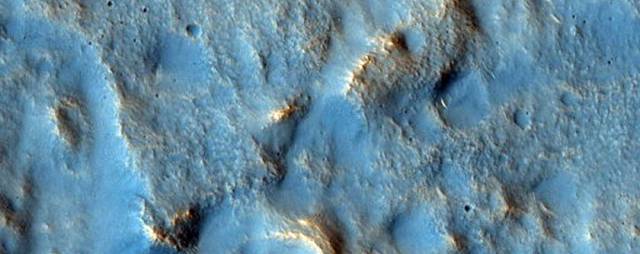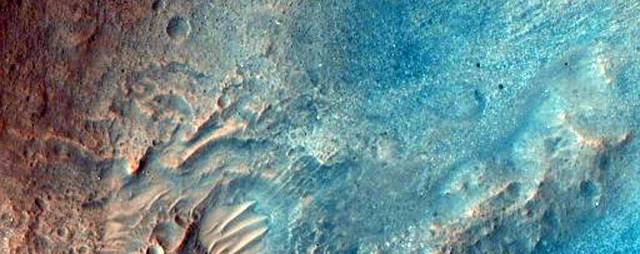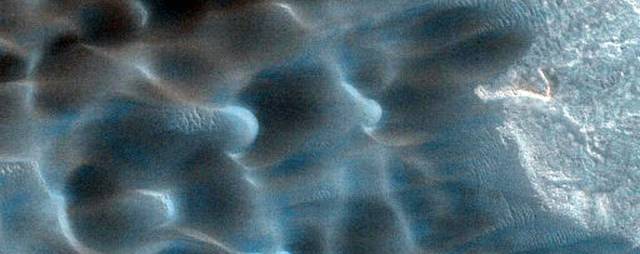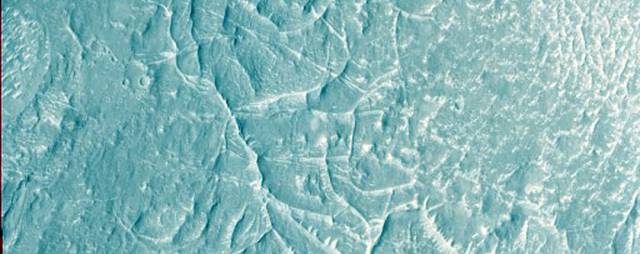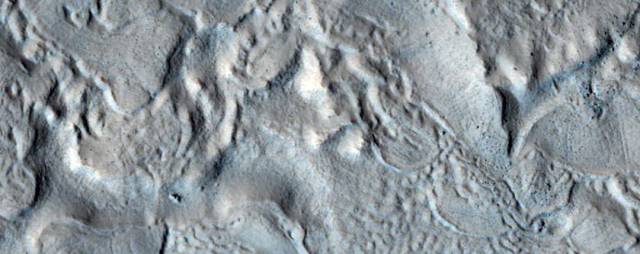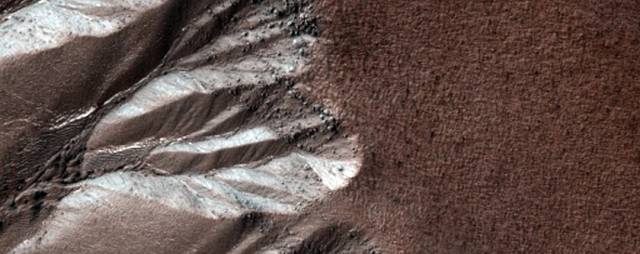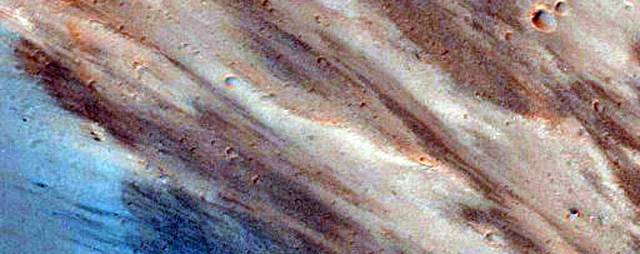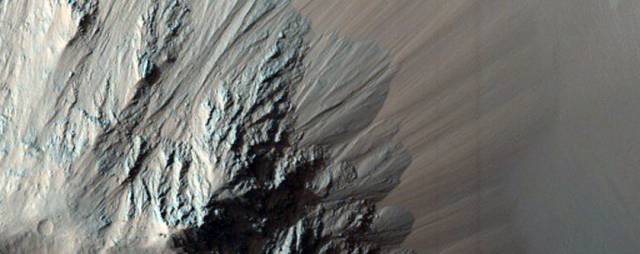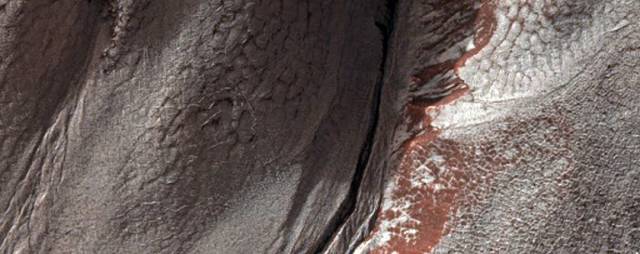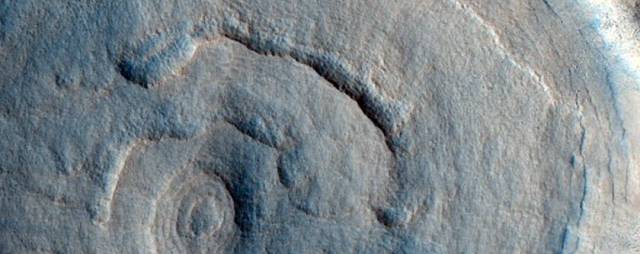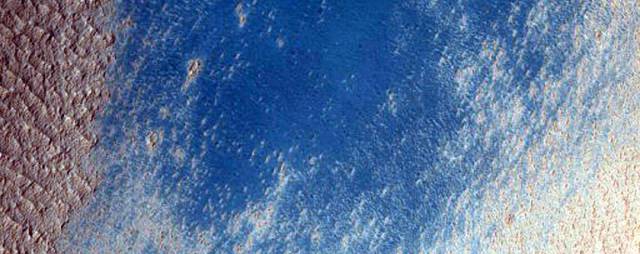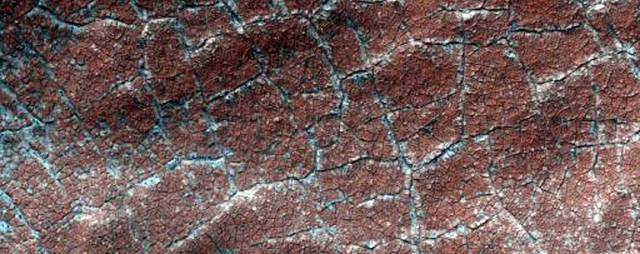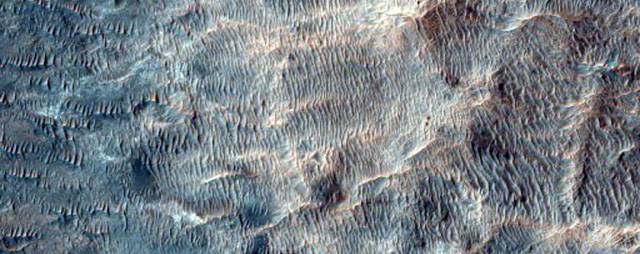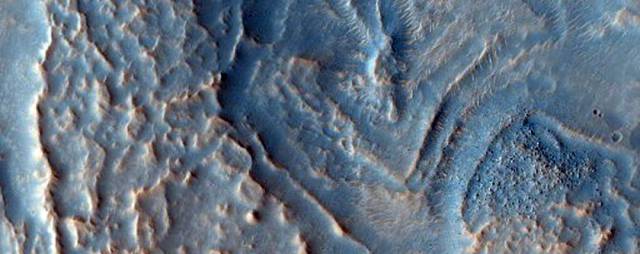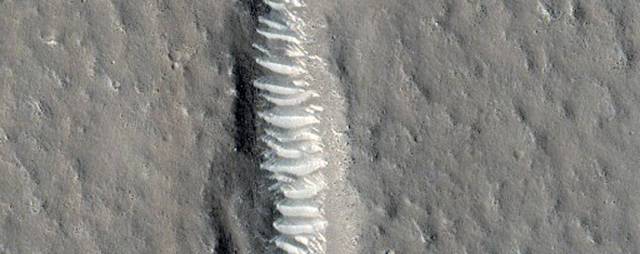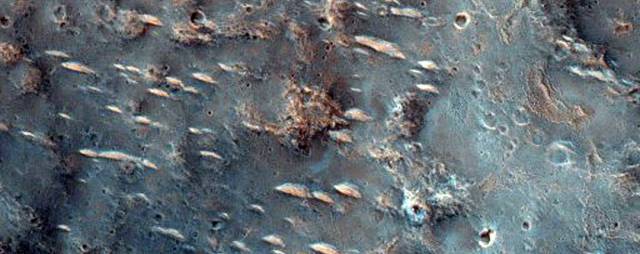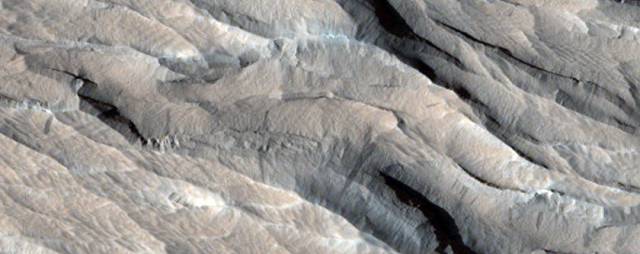Here are the latest photos and the most beautiful photos of Mars captured by NASA's Mars Reconnaissance Orbiter, which started its mission in 2006.
A possible landing site for the ExoMars mission, which the European Space Agency is running.
A North Pole dune field nicknamed "Kolhar," after Frank Herbert's fictional world.
Cerberus Palus crater showing off layered sediments.
Glacial terrain looks strangely iridescent.
A steep slope in Eastern Noctis Labyrinthus
Dunes in a Martian crater. The red bar is an artifact of NASA's image processing.
A possible landing site for the Mars 2020 mission NASA wants to launch in a few years.
The Tharsis region, which is the most volcanic part of Mars.
Terrain near the Martian equator.
Steep-sided craters on a Martian plain.
Ceraunius Fossae is a region dominated by volcanic flows and large cracks.
Layers in Martian buttes found in a region called West Arabia.
Beautiful texture in the region called North Sinus Meridiani.
Wind-shaped features on Mars — the green bar is leftover from processing the image.
A recent impact crater on Mars. (We're pretty sure no one put out a giant cigarette here.)
A crater on Arcadia Planitia, a large flat region of Mars.
The creation of "fans" around dunes may help scientists understand seasonal changes on Mars.
A picture of Utopia Planitia, a large plain on Mars.
Mars in all its two-toned glory.
Seasonal dunes on Mars nicknamed "Buzzel."
Ridges cross the Nepenthes Mensae region, which is often referred to as a river delta for the striking pattern.
The edges of a debris apron, where cliff material eroded away.
Alluvial fans are some of the evidence that scientists used to confirm there was once water on Mars.
A small but recent impact crater.
Scientists use HiRISE to monitor how gullies change over time, which could help them figure out what created them.
Exposed bedrock on the Capri Chasma, which may once have been filled with floodwaters.
"Spiders" are eruptions of dust caused by the way the Martian surface warms and cools.
Eos Chasma is part of Valles Marineris, the largest canyon on Mars.
Another gully scientists are having HiRISE monitor.
A pedestal crater, where a crater has eroded away at different rates based on different rock types.
Watching Mars defrost.
Measuring changes in albedo, or how much light is reflected off the surface.
A basin floor.
A possible landing site for the Mars 2020 mission.
A sinuous ridge on fretted terrain, which may be evidence of Mars' glacial past.
Fractures in Utopia Planitia line up eerily neatly.
Scientists think these may be pieces of rock blown away by an impact.
Yardangs, which are sharp ridges scraped away by Mars' harsh winds.
Near the North Pole, in an area nicknamed "Windy City."

